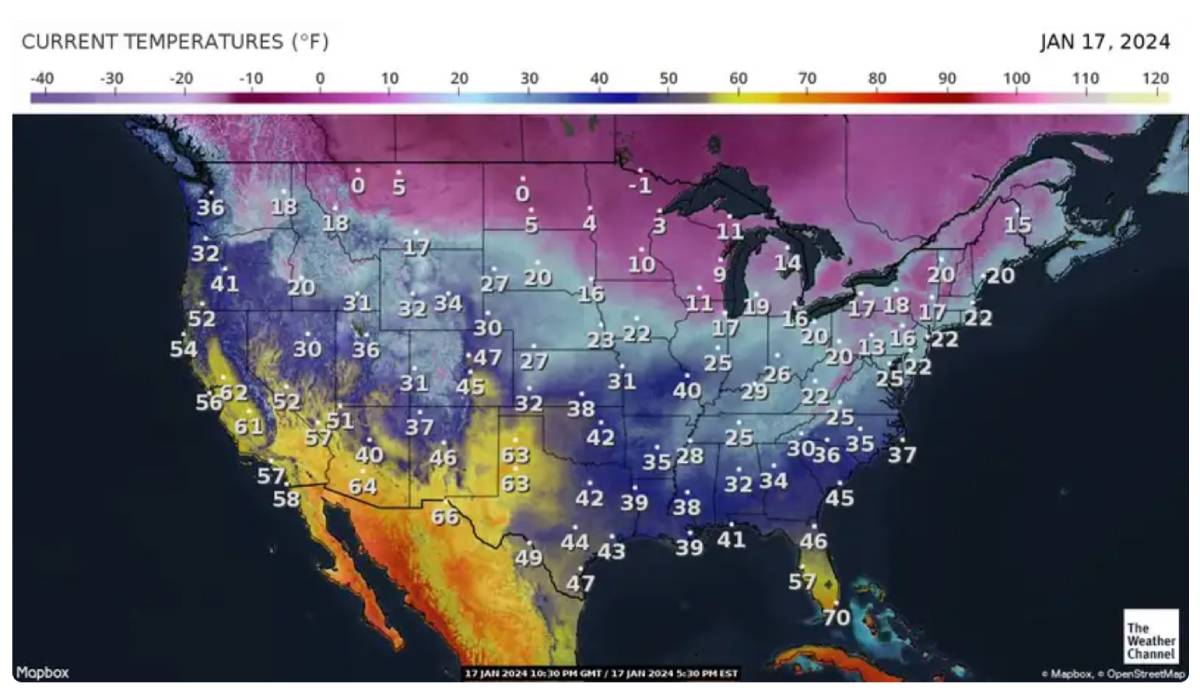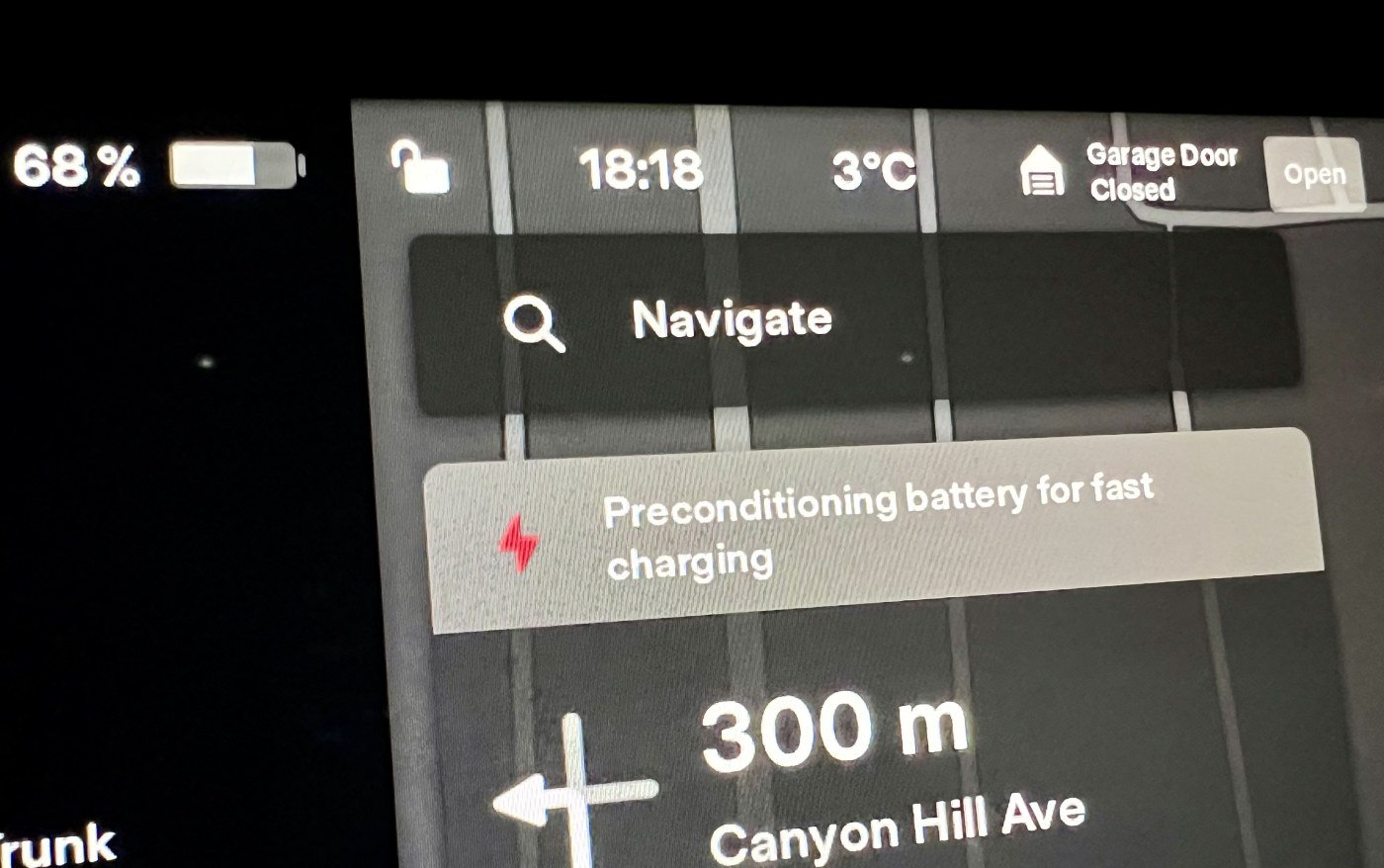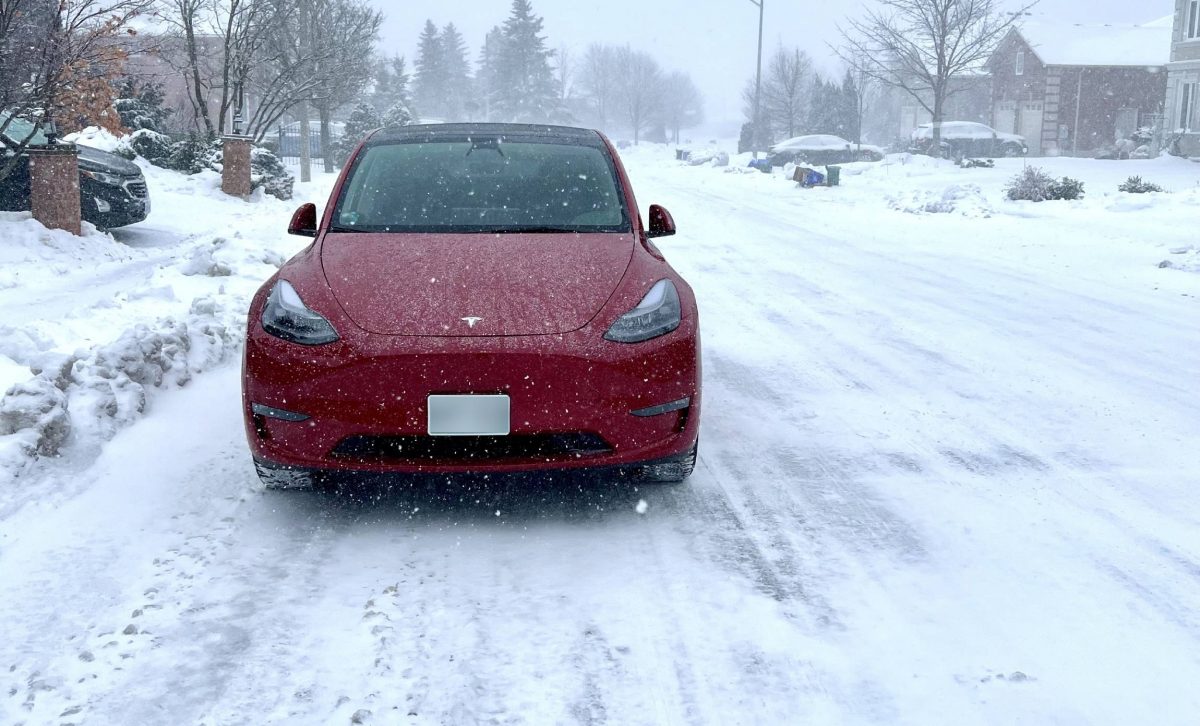Precondition your battery, or you will make DC charging slower for everyone.
January brings bitterly cold temperatures to the northern states and Canada, and this week has been particularly brutal. Freezing temperatures extended well into the southern US states, and temperatures are approaching 0°F (-17°C) in the north.
At times like these, there is a need to educate novice EV drivers on the critical importance of preconditioning (heating) the EV batteries in advance of arriving at DC fast charging stations like Tesla Superchargers and Electrify America stations.

Road tripping EVs in extreme cold temperatures is certainly possible, but batteries will take significantly longer to charge if the internal battery temperatures dip below the freezing point.
Drivers who are unaware of this technology limitation are going to find their EVs accepting only 20-40 kW from fast charging stations when they would have been charging at 100 kW+ if their EV was preconditioned on the way to the charging station. Not only is the driver going to have to wait two to three times longer to charge their own car, but this will reduce the turnover at the charging station causing a lineup of other cars waiting to charge.
How to precondition the EV battery prior to DC fast charging
- Tesla: Drivers of Teslas benefit from a very good navigation and trip-planning system. As long as you are using the in-car navigation, the car will plan charging stops and begin to heat the battery pack in advance of arrival at a Supercharging location. There is no manual toggle to activate preconditioning though, so if you are planning to charge at a non-Tesla charging station you can trick the Tesla to begin heating the battery by setting the navigation to a Supercharger about 15 minutes prior to arriving at the non-Supercharger location.
- KIA: EVs from Kia like the EV6 feature battery preconditioning on cars built for the model year 2023 and later. By setting the navigation to a DC fast charging station, the car should preheat the battery for charging prior to arrival. Drivers can also find a dedicated “Battery conditioning mode” button in the EV Settings menu of the car, according to Kia’s documentation.
- Hyundai: EVs like the Ioniq 5 and 6 from Hyundai are also capable of heating their battery packs in anticipation of fast charging. Both navigation-led and manual override modes are available. The Ioniq Guy on YouTube has an excellent walkthrough on how this works.
- Ford: The popular Mustang Mach-E from Ford also allows for battery preconditioning when using the latest software. According to the Ford’s documentation, en-route preconditioning will begin about 20 miles prior to arriving at a DC fast charger when selected in the car navigation.
- Other EVs: You may have noticed a theme that most modern EVs will trigger preconditioning when the car is aware that it is headed to a DC fast charger. Even if you’re using Google Maps or Waze for normal route planning, it is best to also program the in-car navigation for battery preconditioning and cutting down painfully long charging times.
Let’s stop the myth that EVs can’t handle the cold! There are many happy electric car drivers in extremely cold places like Norway and the Canadian province of Quebec. Just be aware that high voltage EV batteries need some heat in them before they can charge at their full quoted speed.

Related
- What is the blue dot on the Tesla charging status bar?
- Tested: Heat Pump in Cold Weather – How much range is lost?

